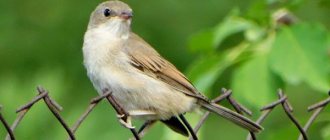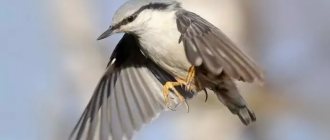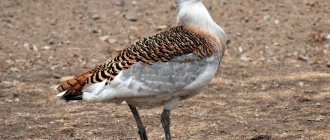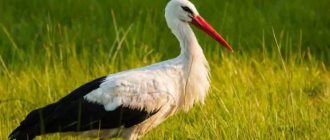Description of the bird
Canaries are known for their variegated and brightly colored plumage. The body length ranges from 13 to 23 cm - depending on the species, weight - up to 50 grams, and wingspan - 15 cm.
In modern times, there are about 100 species of domestic canaries, which differ in color and body size. The most recognizable canary colors are yellow, red and orange.
— Advertising —
The canary belongs to the order Passeriformes, the suborder of songbirds, to the family of finches, the genus of canary finches, of which there is only one subspecies - the house canary.
What does it eat?
Canaries are simple birds; they do not overeat and quickly get used to humans. Their behavior is very friendly and peaceful.
In their diet, birds happily consume food purchased at a pet store or specialized mixtures that correspond to a specific period - molting, breeding, or fortified food to strengthen the immune system.
Nutrition
In the Canaries, the birds themselves took care of the food, obtaining the right quantities of grain, greens, and hunting insects. The owner will have to develop a diet and create a menu for the canaries. Specialized stores sell kits for these birds. Please note that products prepared for other types of birds are not suitable.
Biologists create compositions, providing for different periods of their lives. During molting, special support from the body is required. Crushed cereals and sunflower seeds are added to the finished mixture. Boiled eggs provide good support in moderate doses.
A similar diet is good for the winter months, as the weather gets warmer you need to prepare green supplements from:
- dandelions;
- lettuce leaves;
- plantain and sorrel.
As soon as the first herbs fade, you can replace them with:
- bell pepper;
- apples;
- grated carrots.
Pet stores sell seeds for germinating greens. It is necessary to feed with a strict calculation of vitamins and other additives; excesses will not bring benefit to the bird’s stomach, only harm.
What is inedible for the human stomach is useful for birds. They love to dig in river sand, extracting from it substances only known to them, which are also sold. If necessary, you can collect it yourself on the river bank and scald it with boiling water.
Calcium enters the canary's body through ground eggshells, charcoal or crushed chalk. Supplements and main food are placed in feeders and monitored. You need to constantly change dirty cups and clean the cages.
Where does it live?
— Advertising —
Today, the canary is a domestic bird. But the ancestors of canaries are considered to be canary finches - residents of the Canary Islands.
They feed on vegetation - seeds, plants, and sometimes eat small insects.
In captivity, the bird is unpretentious and enjoys the small pleasures of life. Cage conditions will allow the bird to preserve health and longevity.
Kinds
It is customary to distinguish three main groups of canaries:
- colored
- decorative
- singers
The lion's share of species falls into the first two groups, while no more than 10 species of song canaries are known.
So, let's take a closer look.
Colored canaries
Colored canaries are usually divided into:
- melanin (dark)
- lipochrome (light)
Melanin and lipochrome are pigments that can color the plumage of birds in dark or light shades.
Yellow canary
This is a very beautiful view. Body length up to 17 cm, weight 40 grams. This species appeared due to mutation. Cellular conditions led to a change in color, melanin ceased to be released - this is how the yellow appearance of canaries appeared.
White canaries
In nature, there are two subspecies of this canary
English canary
The bird is completely white with a slight purple tint. The oral cavity is purple. When crossed with a yellow canary, the chicks are yellow rather than white.
German canary
The plumage of this bird contains yellowness in the area of the flight wings and on the fold of the wing itself. When crossed with other species, it produces colorful offspring.
Red canaries
Brought through selective breeding, they include: red mosaic canaries, orange canaries. By the way, the latter were bred by crossing yellow and red canaries.
Ivory canaries
They were developed in 1950 in Holland. The plumage of these birds is dominated by a soft pink-ivory color.
Canaries with red eyes
These birds are also called albinos. Their red eyes appeared due to poor melanin production.
Melanin canaries
It is usually divided into four subspecies:
- black
- agate
- brown
- isabella
Green canary
The first species is usually classified as the green canary. This subspecies appeared as a result of crossing green birds with bright yellow ones.
Gray canary
It was the result of crossing a black and white canary. Its plumage has a noticeable gray tint with a bluish tint.
Black Canary
The series of black canaries also includes: bronze, copper, red-black canaries. The agate subspecies includes the silver-agate canary.
Brown canary
The brown subspecies has only one species. The plumage of these birds has a brown color that varies from lighter to darker.
Isabella canary
The Isabella subspecies includes the pink Isabella canary, variegated canaries, of which there are several variations: swallow, red-capped domino canary.
Decorative canaries
Within this group there are five subspecies, each of which we will describe below.
curly canaries
These include: Parisian trumpeters, northern curly canaries, French, Swiss, Padua, Milanese curly canaries, Italian gibbers.
The ancestors of this group first appeared in the 17th century in Holland. The group's name comes from the curly feathers in the sternum area. Often birds from this group have an average body size - up to 22-23 cm, weight 50 grams, wingspan 30 cm.
The females of this group are very far from housekeeping and maternal affection - they are reluctant to raise their chicks. In general, curly canaries are very demanding in care: they need special food and greenhouse conditions .
Meninger's Curly Canary
This is a bird whose color is predominantly yellow and brown. The size of an adult is 13 cm. By the way, the more the feathers on the bird’s chest protrude, the more valuable it is.
Parisian trumpeter
A very beautiful bird, the males of which have a bewitching voice. The body size is 19 cm. The color is often white or yellow, however, different options are possible. The only exception is the red color, which is not typical for this species.
Birds do not like to take care of their chicks, so their babies are given to ordinary canaries to raise.
Northern curly canary
It is distinguished by its gracefulness and thriftiness - unlike the Parisian trumpeter, the northern canary itself hatches its eggs and feeds its chicks. Color variations for this species are unlimited. In the photo - on the left.
Swiss curly canary
It has 17 cm in body length. This bird can be of any color. This species is very young and only recently bred.
Italian curly canary
This is a bird with very short feathers, and in some places, for example on the sides, bald patches are visible. This bird species reproduces very poorly.
Humpback canaries
The birds have a strange physique - their head is lowered below their shoulders, and their body forms one vertical line. If you look at the bird from the side, its profile appears humpbacked.
The traditional color of this species is white, but other variations are possible. In this form, it is customary to distinguish the following types:
- Belgian
- Munich
- Scottish
- Japanese
Belgian canary
It is 17 cm in length and 30 grams in weight. Mostly its color is yellow.
Munich canary
An interesting feature of this bird is its straight tail, which it never bends.
Scottish canary
It has a very small head, which it pulls down, while the tail curls under the pole on which it stands. In this state, the bird looks like a sickle.
Japanese canary
It is a synthesis of the three types listed above. The bird was bred by a breeder from Japan - Hoso.
The color red and all its shades are unacceptable in plumage. The birds reproduce very well, and the responsibility for raising the chicks is not placed on someone else’s shoulders.
Crested canaries
Bearers of a kind of forelock-bang on the head, which was formed due to elongated plumage. The subspecies appeared in the 18th century in Germany.
In nature, there are four subspecies of crested canaries:
- Gloucester
- Lancashire
- German
- English
The first species does not exceed 12 cm in body length. The color can be different, except red. The crest on the head has a dense, adjacent shape; each feather should be symmetrical and not stick out.
Gloucester canary
It was first introduced in 1925.
Lancashire canary
It was bred in England, in the county of Lancashire. The birds are very sickly and do not reproduce well. By the way, Lancashire canaries are the largest of the group of crested canaries, their body length is 23 cm. In this subspecies, the crest is lowered over the eyes.
German Crested Canary
Body length is from 13 to 14 cm. The bird has an “eyebrow” above the eyes. It is formed due to the thick and falling plumage in the area above the eyes.
English crested canary
Body length is from 16 to 20 cm. This species of bird has hanging feathers in the area of the wings, abdomen and tail.
Curly canaries
These birds have very beautiful and even feathers. This group usually includes:
- Swiss (Bernese) canary
- Spanish decorative canary
- Norwich
- canary border
- Yorkshire canary
Swiss figured canary
This bird is 17 cm in size. By the way, it got its name from the city of Bern, where it was bred. A distinctive feature of this subspecies is a lowered gaze.
Spanish decorative canary
This is a small bird, only 10-11 cm in size. The shape of its head is slightly flattened.
Norwich canary
The bird has an orange color and a massive body.
Canary border
These birds are very graceful, their posture is captivating with its pride and ability to hold its back. The birds got their name due to their location - between England and Scotland. And the word “border” translated from English means border. Body size is from 13 to 14.5 cm.
Yorkshire canary
This bird has two subspecies: ancient and modern. The first species was bred in Yorkshire. The birds were small in size and slender.
The modern subspecies, on the contrary, are massive birds, up to 20 cm in size, with a very short neck, which is constantly retracted into the body.
Painted canaries
Birds are divided into two types:
- lizard
- London
Lizard canaries
The first type is distinguished by a speckled pattern on the body. Among lizard canaries, there are two subspecies: golden and silver canaries. It is interesting that their beautiful plumage is short-lived - the birds lose their brightness after molting and become faded.
London Canaries
Decorative canaries also lose the beauty of their plumage - this happens after the second year of life. The birds are very gentle and are a favorite of many people. Birds are yellow before molting.
Singing canaries
Singing canaries form the third group, which includes:
- German roller skater
- Belgian Malinois
- Tambrados Spanish
- American singer
- Russian singing canary
German roller
This is a very funny bird, capable of singing with its beak closed. Her song is leisurely and quiet. Body size is from 11 to 12.5 cm. The dominant color of plumage is yellow.
Belgian Malinois
He sings very diversely, and the song is similar to the murmur of water. The bird has a beautiful, even yellow plumage, the tail has a white end.
Tambrados Spanish
He sings very loudly, but harmoniously, the sounds are similar to the ringing of metal. The bird is the oldest of the song canary species. Body length up to 13 cm. Color – gray-green.
American singer
The bird has a very beautiful, even color, orange. Sings loudly and melodiously. Singer is a synthesis of roller and border. Body length up to 15 cm.
Russian song canary
The bird can make the sounds of all the feathered inhabitants of the Russian forest, since it was previously trained to do so.
Leading breeds
Having studied the features of care, you can find out what types of canaries there are.
It turns out that ornithologists know for certain more than 12,000 breeds of canaries. They are usually divided into three subgroups:
- Colored. The most common group, the elite species, are red canaries.
- Decorative. Necessary only for breeding new breeds.
- Singers. The highlight is their special voice and the reproduction of special sounds; in total, 10 species of birds are included here.
Female and male
Sexual dimorphism between a female and a male is expressed by the following factors:
- Female canaries have a shorter tail than the male.
- When singing, the female's crop remains in a calm state, while the male's crop inflates.
- males sing louder than females. The latter have abrupt and short sounds
- females are more active when building a nest, and males, at this time, prefer to sing or care for their spouse.
Captivity
The canary is a very sociable and trusting bird. Keeping a canary is not difficult, as it is not fussy and reproduces well.
To build a cage, it is better to choose wood material: ash, oak, beech. Or you can buy a cage in a store. There will be no problem if you choose a metal cage. It is better to stick to the following dimensions: 35 cm in length, 29 in height and 20 in width, and the distance between the poles should not exceed 1.5 cm.
It is better to purchase a cage with a retractable feeder.
Don’t forget to put a “bathing cup” - a container with water - canaries love to swim.
It is better to clean your pet’s home at least twice a week. If the cage is made of metal, then it can be scalded with boiling water and then dried thoroughly.
Place the cage in a sunny location, but avoid direct sunlight or drafts.
Be patient - the bird does not like screams. A canary can be trained to feed from your hand, but this will take a lot of time. It is important that you gain the bird's trust.
Top, bottom or middle
It is recommended to install the cage at eye level; a low position will suppress the bird, and a high position can develop in it superiority over the owner.
In addition, the canary below can become a target for a pet, and carbon monoxide accumulates above. Especially in houses with stove heating. Even a small amount of carbon monoxide can kill a canary, which is still used by miners in some countries. To avoid the death of the bird, you should not smoke, light incense sticks or spray aerosols near it.
For the cage, you can purchase a special stand with a low center of gravity that holds the cage in one position. At the top of the stand there is a hook on which the cage is hung. On sale you can find comfortable tables for cages, equipped with drawers for storing bird supplies and food.
Breeding canaries
Canaries have been successfully breeding in captivity for more than 150 years. Amateurs and real canary breeders, through selection, have achieved versatility and color in the canary's plumage. Experiments are also taking place in the field of improving the vocal cords of these birds - there are a lot of variations for breeding and achieving the goal.
The spring months are considered the most suitable for mating - April, May. Choose individuals from one year of age, pay attention to the male’s voice - it is inherited.
The incubation period for eggs lasts 13 days. After the babies appear, the male can be removed from the cage. But this is individual, since males can behave aggressively, or they can help in the feeding process. On days 24-28, the chicks are placed in a separate cage, and after the 35th day of life, the birds begin to sing. You need to know that the voice will fully reveal itself only in the second year.
You need to feed the birds with grain feed or buy a mixture at a pet store. During the period of hatching eggs, the female is given a boiled egg with breadcrumbs.
Singing row
Russian breed
The wild canary appeared in Russia in the seventeenth and eighteenth years. The Russian canary has not received registration from the World Confederation of Bird Fanciers, but in Russia it is officially recognized. Although the breed does not have a special hereditary singing, the Russian canary is considered the most popular Russian songbird. Mostly all birds have yellow plumage, but the redwood canary is also known.
The Russian canary gained fame in the late nineteenth and early twentieth centuries. Tavern owners, having no money to hire singers, entertained visitors with canary songs. The first canary singing competitions began to be held in taverns.
Breeders taught canaries to sing using whistles, pipes, and songs of forest birds. Soon the first variety appeared - the Russian canary of the oatmeal tune, which learned from the forest bunting.
Gradually, the Russian canary learned several variations of tunes: the song of the Linen Factory, Pavlovian songs, and the Ryabov tune.
Among the Russian singing of these birds, the direction of modern forest melodies is popular. The common forest canary does not purposefully learn. It is her natural singing, passed on through inheritance, that is valued.
Interesting Facts
- Miners often took canaries with them. The fact is that the bird is highly sensitive to carbon monoxide, so it could serve as an alarm in case of danger.
- Many writers and composers sang canaries in their works. As for composers, they tried to create similar sounds in their musical works.
- Canaries are very cute and sociable birds. With good care they can live up to 15 years.
- Thanks to the mixing of different species, it was possible to develop many unique subspecies, for example, the American Singer, the crested canary.
- The canary got its name in honor of the Canary Islands.
- The first to come up with the idea of domesticating the canary were the Spanish monks.
Owner reviews
There are several varieties of house canaries. Plucked from the wild over many centuries, this domestic bird has undergone significant changes in appearance so that it bears little resemblance to its wild relative.
Only canaries, that is, male canaries, sing pleasantly, and even then mainly during the mating season, which occurs in February / March. In August the bird molts, then practically stops singing. As for females, they rarely make sounds, and even then these sounds cannot be called melodic.
In any case, it is best to buy young birds that can be trained without problems. In addition, they easily imitate the singing of other birds.











